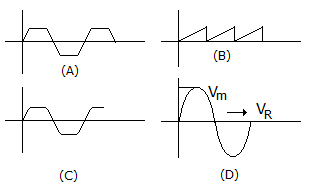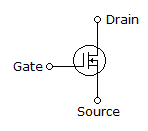ECE :: Analog Electronics
-
A transistor amplifier has poles at
s1 = - 0.000245 x 109 rad/sec.
s2 = - 0.0748 x 109 rad/sec.
s3 = - 0.670 x 109 rad/sec.
s4 = - 4.38 x 109 rad/sec.
The upper 3 dB frequency of the amplifier will be -
In the circuit of figure for sinusoidal input the waveform of the output will be as shown in

-
An engineer designs an amplifier to have a voltage gain of 60, but when constructed it only had a gain of 50. What value of feedback will double the gain?
-
In the case of an amplifier, the normalised voltage gain is given by.

where f0 is zero frequency, fP is pole frequency. For a standard frequency response of the amplifier, -
In a rectifier only a portion of input power is converted into DC power. The rest is AC power.
-
The slope of the transfer characteristics of an N-channel JFET is
-
In a current mirror


 Whatsapp
Whatsapp
 Facebook
Facebook


